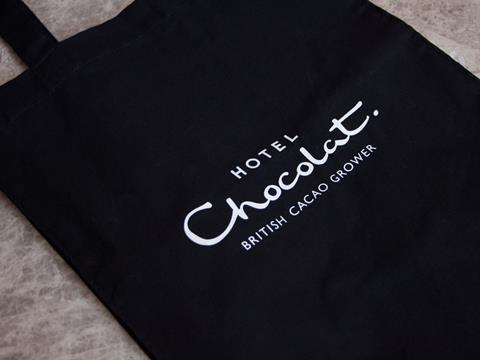
As a result of consumers dramatically shifting their attention to online and at-home eating and gifting experiences, a new approach to food and drink packaging has become necessary.
With packaging acting as a chance to entice and retain new or lapsed customers, experiential branding, sustainable and recyclable alternatives, and social media savvy packaging designs could set a brand apart from its competitors in a food and drink sector inundated with choice.
Robert Lockyer, CEO and founder of Delta Global, a packaging solutions provider for luxury brands, believes food and drink brands must reassess an essential sales driver - packaging – and adapt swiftly to the demand for unique, premium presentation.
The emphasis on standout packaging has never been greater, and brands need to adopt a premium packaging ethos that works to deliver memorable experiences and a multi-faceted product that leaps from the shelf.
I’ve come up with three key packaging considerations that brands need to consider in order to present a distinctive and unforgettable product.
How will the consumer use premium food and drink packaging?
Consider where the food or drink item will be consumed. I think an under-developed sector of the premium drinks industry is home-consumed wine bottle packaging. This is often, I think, due to old-fashioned perceptions of wine buyers and the difficult-to-escape traditions these sometimes bring.
And while we have seen a loosening of these traditions, I think brands like Dogma Aged wines have found a niche in a highly competitive market that will serve them well. Their bottles are aged for five months, submerged in the black sea - which invites sea creates or organisms to decorate them. This means that each bottle is unique, leaps from the shelf, and provides a talking point at dinner parties and social gatherings.
Dogma’s packaging understands, in a completely distinctive and original way, why general consumers buy, gift, or select a wine.
Understanding why your customer buys your product is the first step in creating distinctive premium packaging. Consider where your product will be consumed, purchased – and who it can potentially be gifted to.

Where will consumers see the packaging?
The high-street provides intense competition for food outlets, with newcomers competing with numerous established global chains and local favourites. That makes eye-catching packaging a crucial visual marketing tool, whereby passers-by clutching a well-designed premium package become a walking advertisement for your brand.
And now, there is even more scope for premium packaging, with virtual events where food and drink are a central focus – with digital celebrations happening across the world, wine and artisan cheese tasting evenings, and even corporate gifting bringing people together, as so many of us remain working and entertaining from home.
Consumers are now far more stimulated by the opportunity to show off their deliveries and unboxing experiences on social media, so therefore the packaging must be visually impressive.
Likewise, brands like Moët & Chandon should capitalise on the creativity of luxury artists such as Alexander Hall of Haute De Gamme, who reimagined the traditional champagne bottle, partnering with Intercontinental Hotel Group in 2018 to celebrate their 200th hotel opening with a painted bottle of every location a hotel was situated in, hung as a display exhibition.
Champagne brands could have produced a stunning limited-edition bottle that consumers couldn’t wait to get their hands on, making the product worthy of viral shareability on social media.
Externally to the premium sector, the adoption of making fast food fun has been taken a step or two further. Sheikh Branding and its Super Foul concept have built a sustainable pack targeting the younger generation, which incorporates a 90s fashion and cultural trend and uses a nostalgically charged vibrancy to capture the attention of its buyers.
Its award-winning design speaks of a clever insight into its target audience and competitor vulnerabilities.
Does the packing need to show the product?
If the packing emits luxury values, I suggest that, concerning food items, the answer is no. In fact, not revealing the product can create a sense of mystery, intrigue and anticipation, increasing the unboxing experience for the consumer.

I tend to think of Fortnum & Mason’s food items as a great exemplar. I’m particularly taken by their ‘biscuit packs’ and the way in which, when aligned together, the ginger biscuits create a Victorian doily pattern that echoes the grandeur of a premium, traditional biscuit offering.
But my absolute favourite design is the ‘enrobed’ chocolate biscuit range. With this design, which adorns the entire range of chocolate biscuits, Fortnum and Mason have created a reusable jewellery box type packaging, encouraging sustainability and repurposing.
With each range featuring playful illustrations – something the brand has been doing through its long and esteemed history – the packaging emanates excitement and intrigue. Without knowing precisely what awaits inside, the charm of the design appeals to the consumer to lift the lid and peep inside.
Creating this type of theatre ensures that a relatively rudimentary food is given clear market distinction, inviting the consumer to re-purchase other items in the range. It is packaging acting as a collectable, keepable item that enhances the product that awaits within.
And this is exactly how food and drink brands need to approach packaging. To think beyond the product to offer a premium, packaging experience to future-proof your product in a tumultuous consumer environment.











